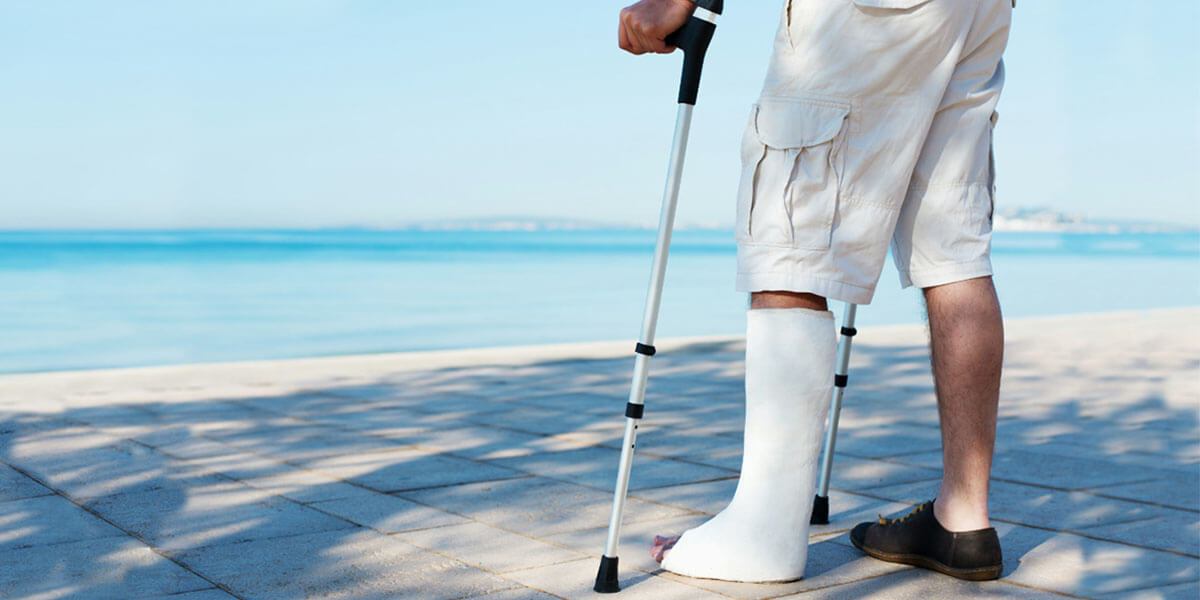Experts have long established that women are more prone to fractures than men. Postmenopausal women are especially susceptible to bone injuries because of their lower bone density and the decline in estrogen level following menopause.
A fracture happens when the bone breaks, cracks or ruptures leading to a loss of the bone’s continuity and integrity, whether it’s a hairline crack or shattered bone.
Why Are Women Prone To Fractures?
Compared to men, women have smaller bone structures that become thinner with age. Experts estimated in a study that a 60-year-old woman is 44 percent more likely to have a fracture compared to a 60-year-old man. Regardless of age, body size and race, women are also twice more likely than men to experience non-spine fractures or injuries to the wrist, shoulders, knees, ankles, and hips.
Women’s reproductive hormones also affect the nutrients the bones receive, especially in menopause, which leads to osteoporosis. Some 10 million Americans develop osteoporosis in old age and 80% of them are women. Around the world, 200 million women are estimated to have osteoporosis and 1 in 3 women above 50 years old suffer from fractures as a result of bone loss.
What Are the Common Causes of Fractures?
The common causes of fracture include:
- Lack of minerals and protein in the diet
- Stress, both physical and mental
- Inadequate weight-bearing exercises
- Complications from fall and other injuries
Bone loss, however, can be corrected and improved with proper care and maintenance. The risks need to be mitigated to prevent complications and minimize costly medical visits.
- Eat specific bone-building foods rich in vitamin D, vitamin K, calcium, manganese, and zinc
- Avoid acid-forming foods that deplete the bone of its minerals
- Include more green leafy vegetables, nuts, and seeds in your diet
- Cut down on soda and caffeine
- Do regular exercises like yoga and tai chi
- Avoid stress as it elevates your stress hormone levels, contributing to bone loss
First Aid Techniques for Fractures?
Pain, bruising, swelling, deformity, and the inability to use the limbs are some of the signs and symptoms of a fracture, apart from obvious protrusions or dislocations. Fractures in older people should never be disregarded because they can lead to premature deaths.
To administer first aid in cases of fractures, it’s best to focus on immobilization, or limiting the movement of the affected area. You won’t want to aggravate the fracture so it’s best to keep still. The fracture will require further tests and treatments by a professional. If you can’t bring the injured person to the hospital, call an ambulance for immediate transport.
While waiting for medical help, attend to any wounds by cleaning and stopping any bleeding. If the fracture caused protruding bones, simply clean the wounds around the edges and cover it carefully. Immobilize the protruding bone. Don’t apply any pressure, nor attempt to straighten protruding or broken bones.
Secure the fracture with a splint. Tie the splint carefully to support the injured area. Use a sling to support fractures of the collarbone or arms. You can also apply a cold pack to help with the pain and swelling pain.
How to Recover Faster After a Fracture
Mobility after a fracture depends on your body’s healing process but you can boost your recovery by doing a few adjustments in the way you sleep, sit or move about. You need to find proper positions or control your movements so as not to cause more strain on the injury.
- If you have a hip fracture, make sure that your spine and legs are properly aligned when you lie down on the bed. It might be better to take a complete bed rest for a few days and move only when the pain is gone or manageable. If you do get out of bed, always ask for assistance until you’re strong enough to do it yourself.
- If you have a knee or ankle fracture, resist the urge to stand or sit for long hours to prevent straining your body. Take slow steps when you need to walk. Consider using forearm crutches to help with your mobility. Take breaks when you have to walk for a longer distance, such as when you’re doing therapy or balance exercises.
- If you have a wrist and shoulder fracture, stabilization is key during the first week as you don’t want the bones and tissues to misalign, so keep your cast or sling attached at all times. Resting on a chair might be difficult in the beginning and you won’t likely be able to doze off on the couch. Use reclining pillows for added support until your fracture heals.
Your doctor will eventually advise when to increase your activity after a fracture. Follow the prescribed dosage for pain relievers as well.

